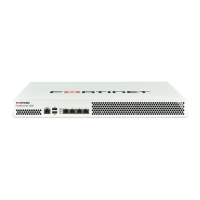Page 125
Troubleshooting
This topic provides guidelines to help you resolve issues if your FortiRecorder appliance is not
behaving as you expect.
Keep in mind that if you cannot resolve the issue on your own, you can contact Fortinet
Technical Support.
Solutions by issue type
Recommended solutions vary by the type of issue.
• Video viewing issues
• Snapshot notification issues
• Login issues
• Connectivity issues
• Resource issues
• Data storage issues
Fortinet also provides these resources:
• the Release Notes provided with your firmware
• Technical documentation (references, installation guides, and other documents)
• Knowledge base (technical support articles)
• Forums
• Online campus (tutorials and training materials)
Check within your organization. You can save time and effort during the troubleshooting
process by checking if other FortiRecorder administrators experienced a similar problem
before.
Video viewing issues
If you can connect to FortiRecorder, and your cameras can connect with your FortiRecorder,
but you cannot view video that is streamed or stored on FortiRecorder, first check that you have
installed software that can view live streams (which use RTP) and files (which use .mp4 format).
For requirements, see “Configuring video profiles” and “The notification window will be replaced
with a video clip player.”.
If you have installed a suitable media player but still cannot view the video, try clicking the panel
arrows to hide and then show the panel again. For some Windows computers, this can solve
the problem. (This QuickTime issue does not affect Mac OS X computers.)
If this does not trigger the video to play, make sure that its codec software does not have any
conflicts, and is capable of displaying H.264 video. Media players’ codec plug-ins can come
Different media players can interfere with each other. By default, some installers take file type
associations previously belonging to other players and re-assign them to the new software. If
you installed software to view downloaded video files, for example, and suddenly could no
longer view live video streams, you might need to fix the file associations for RTP and/or MP4.

